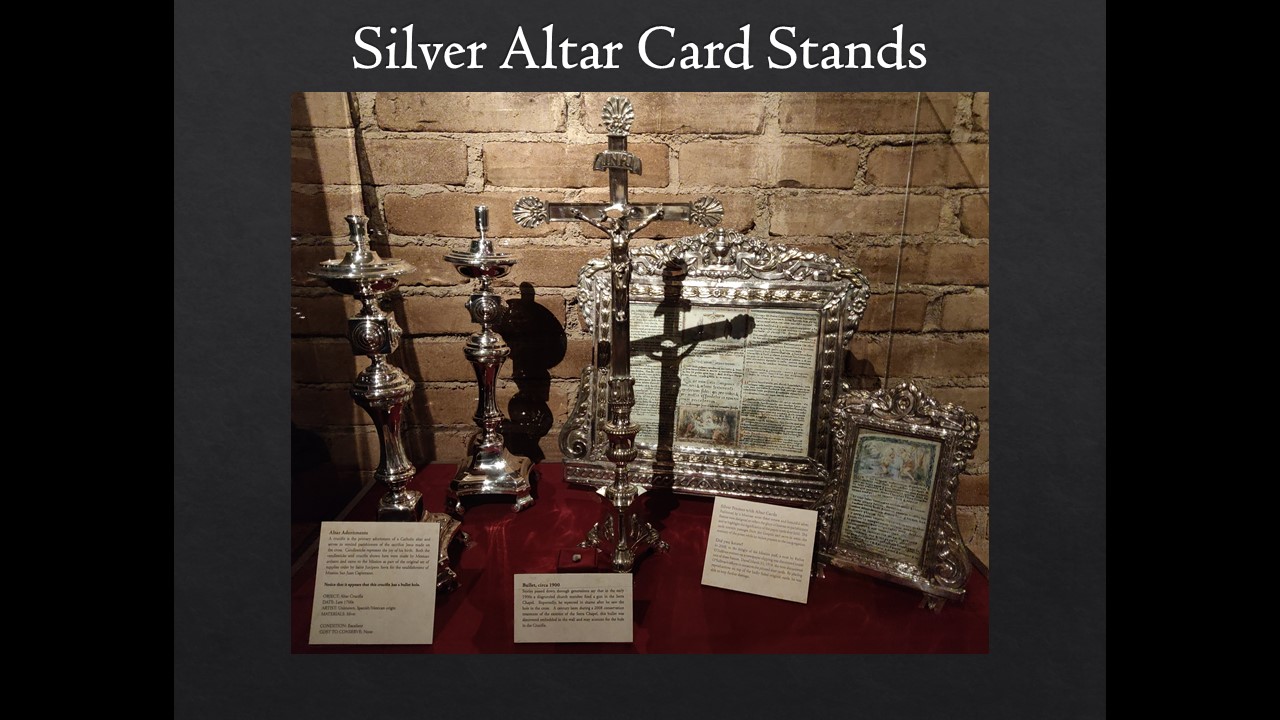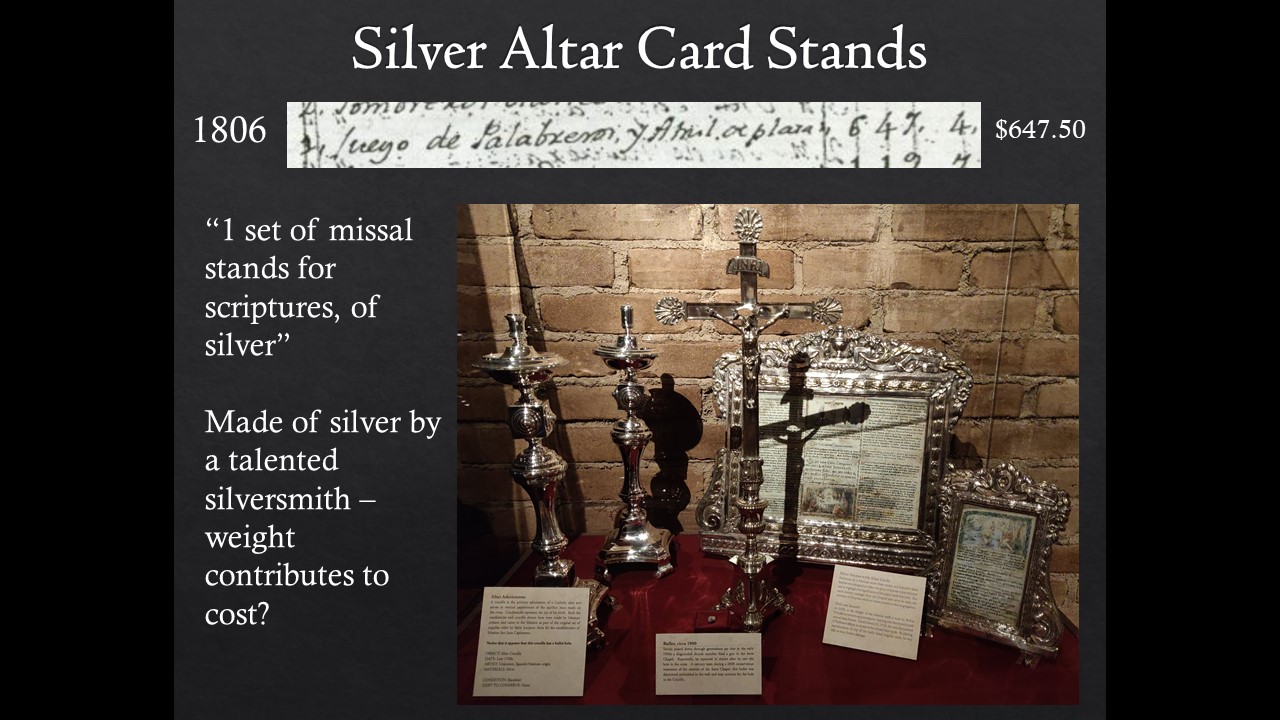Mission San Juan Capistrano - Dating the Artifacts #2
Mission San Juan Capistrano - Dating the Artifacts #2
Dating Extant Artifacts at Mission San Juan Capistrano, California
In the summer of 2024 I was graciously asked by Mechelle Lawrence Adams (Executive Director) and Jennifer Ring (Mission Archivist) to give four talks at Mission San Juan Capistrano. The first of these talks discussed the story of how the mission was supplied during the Spanish colonial era (1769-c. 1821). This talk was prompted by the exciting discovery of Mission San Juan Capistrano's account books in Mexico City by my friend Dr. Marie Duggan, an economist who teaches at Keene State College in New Hampshire. Not only has Dr. Duggan provided me scans of the account books, she's also graciously assisted me in understanding how they were organized, how the province of Alta California was supplied, and the translation and interpretation of what was ordered and sent to the mission. Additionally, a small group of top-notch historians such as Dr. Damian Bacich (San Jose State University) and David Rickman (historian of Spanish colonial material culture and creator and admin of the wonderful Facebook group "The Arts and Skills of the Spanish Borderlands") have assisted in this research. All of this said, the discoveries and translations in the presentation below undoubtedly contain errors. I invite anyone to share any insights they may have on this subject. With any luck, we'll continue to develop a better understanding of the rich and beautiful material culture present in Spanish colonial establishments on the frontier. A BIG thank you to everyone who continues to support this research!
A note about the presentation: I originally presented this information at Mission San Juan Capistrano on June 27, 2024. Present in the audience were Orange County historian Stephanie George (and behind-the-scenes-mastermind of the Orange County Historical Society), Father Chris Heath (Archivist of the Diocese of Orange), and Heidi Lucero (Chairwoman of the Acjachemen Tribal Council). All of their support and offers of help deserve note. And possibly with the help of the spirits of her and her people's ancestors, Chairwoman Lucero was by far the winner of the "Price is Right" game played at the end of the presentation!
General Introduction
Mission San Juan Capistrano is full of artifacts. From the carefully inked vellum spine of one of the missionaries’ books to the carpenters’ beautifully carved leaf-and-floral patterns on the church's wood candlesticks, each artifact tells a story. Each also transports us to the mission period, evoking a sense of both mystery in their form but familiarity in their function. Together they provide an aesthetic experience that directly ties us to the thoughts and feelings of people living long ago. The objects themselves represent the story of their maker, their workshop, teachers, and the trends of their society. Many of the pieces made the long journey from Mexico City on muleback over the mountains to the port of San Blas where they were loaded on the annual supply ship and then sailed up the Pacific coast of California where they were unloaded and transported by mule again to the mission. They’ve traveled a long way to be here.
Many of the stories of each artifact, however, have been lost to time. Their origins can only be assumed from what is more generally known about similar objects at other missions. The detailed stories of when, why, and how each artifact made its way to the mission have remained elusive.
All of this changed when a fellow researcher and friend, Dr. Marie Duggan, recently found the account books for Mission San Juan Capistrano in Mexico City. These books were maintained by the syndic or habilitado general (paymaster), of all goods sent to California during the colonial era at the mission (roughly 1776-1821). Dr. Duggan graciously sent me scans of the account books and I’ve teamed with the mission’s archivist, Jennifer Ring, to use the mission’s records to round out the research. This is the second in a series of articles dating extant objects at the mission and telling their stories (please see Mission San Juan Capistrano - Dating the Artifacts #1).
Part 6: The Great Stone Church (A future post)
Part 10: Richard Henry Dana at Dana Point





















































